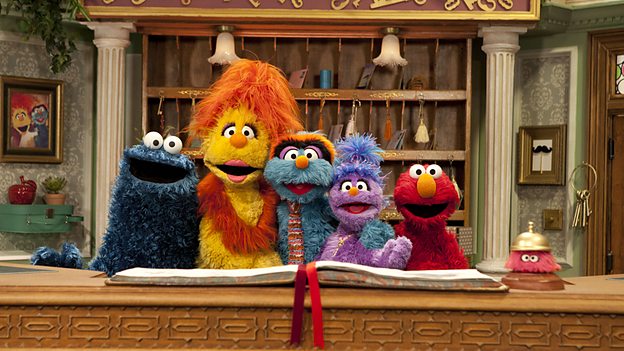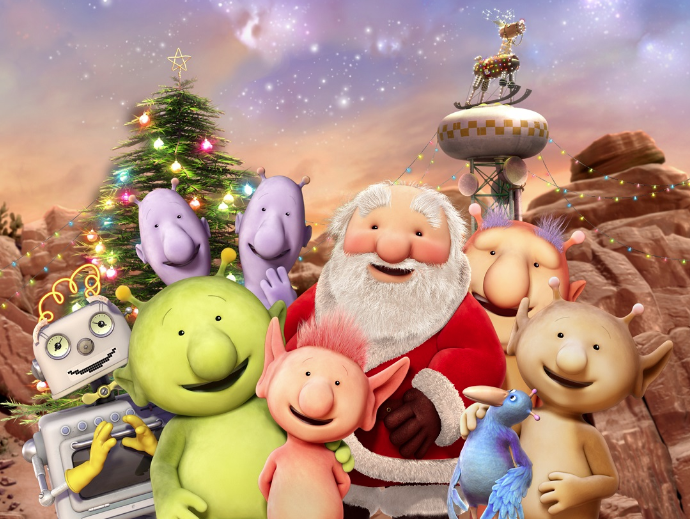
After more than 35 years of operation, TBI is closing its doors and our website will no longer be updated daily. Thank you for all of your support.
You(th)Tube
 The launch of the YouTube Kids app in the US in February has been greeted with unanimous approval by content companies both big and small. Gary Smith reports.
The launch of the YouTube Kids app in the US in February has been greeted with unanimous approval by content companies both big and small. Gary Smith reports.
That there are now several generations of digital natives is a given, as is the fact that the current crop of 2-8 year-olds are more thoroughly immersed in the digital world than any generation that went before. As a demographic they have little or no visceral attachment to where their favourite shows are coming from. As FremantleMedia’s Bob Higgins says: “The kids audience has had less time to develop traditional TV habits and will be more willing to go to YouTube first, providing it has the most compelling content.”
Stellar 200% year-on-year growth in YouTube’s family entertainment space versus 50% on the main YouTube platform indicates that this is already the case, and, for YouTube, the launch of a kids’ service was an attempt to provide a product to meet a rapidly snowballing demand.
Malik Ducard, global head of family and learning at YouTube, says interactivity is a key difference between the way kids interact with content on YouTube and a traditional linear channel. “Family/learning has been a big growth category for us and one of the things we have seen is that a lot of our users regard themselves as creators,” he says. “Their experience doesn’t end when the credits roll – they want to make their own videos or engage in other ways that combine video with playtime.”
That interactive mindset is built into the DNA of the kids app, Ducard says. “Our content partners, which include the likes of Dreamworks, Jim Henson, Sesame Workshop, Hit Entertainment and National Geographic Kids, have built channels for the app, and while those channels carry episodes of shows like Furchester Hotel (below) and Thomas The Tank Engine, they are also building new IP to extend the fan experience. An example is Hit’s new content for its Thomas channel, based on the idea that Thomas is leaving the Isle of Sodor to go on a world adventure.”
 YouTube had to circumnavigate the US’ COPPA legislation (Children’s Onllne Privacy Protection Act), which forbids data collection on anyone under 13-years-old. Hence, in principle, no-one under that age should have signed up for a YouTube account. The workaround is that YouTube Kids is a ‘logged-out’ service. Users don’t register, and they can’t make comments or ‘favourite’ videos. Instead the system recognises each device and IP number in order to be able to make recommendations.
YouTube had to circumnavigate the US’ COPPA legislation (Children’s Onllne Privacy Protection Act), which forbids data collection on anyone under 13-years-old. Hence, in principle, no-one under that age should have signed up for a YouTube account. The workaround is that YouTube Kids is a ‘logged-out’ service. Users don’t register, and they can’t make comments or ‘favourite’ videos. Instead the system recognises each device and IP number in order to be able to make recommendations.
This new style of data collection presents a challenge to content providers. “Tagging is more important than ever, so much so that YouTube is actively advising producers on how best to do it in order that they don’t get missed out in searches and user profiling,” Greg Childs, director of not-for-profit group the Children’s Media Foundation, says. “I’m very happy to see that YouTube is taking responsibility in the same way that broadcasters have to. Recognising the presence of children and their needs is something we’ve been talking to them about for the last 18 months.
“What the app provides is a mini-version of YouTube where searches can only pull up material suitable for kids of eight and under. Plus it listens to the dialogue, so UGC expletive-laden versions of kids shows like Peppa Pig are weeded out, and you can’t search under words like ‘sex’, for example. Really, my one reservation is that the service doesn’t take into account 8-13 year-olds, although the company is currently considering introducing a service catering to that segment as well.”
For the moment, content firms are generally looking to leverage the ability to offer up bite-size pieces of broadcast shows on the service, as Higgins, FremantleMedia Kids & Family Entertainment’s executive VP, creative and production, explains: “We currently use YouTube as a fun, easily shareable extension of our brands, like having a sing-along version of the Kate & Mim-Mim [below] theme, or UGC clips of My Babysitter’s A Vampire. We’ve spoken with YouTube about longer form exhibition and exploring how that might co-exist with linear broadcasts, and those discussions continue.”
 How disruptive the app could be for established players is dependent upon the digital video giant allocating time, energy and resource to the service. “If they do, I think they will be a big player,” Higgins says. “Much of YouTube Kids’ success will have to do with content choices, getting the word out to the audience, [parents’] ability to police and control, and the ease of navigation, but any time a new player enters the field, it’s a good thing. It makes everybody step up their game and innovate to compete for eyeballs.”
How disruptive the app could be for established players is dependent upon the digital video giant allocating time, energy and resource to the service. “If they do, I think they will be a big player,” Higgins says. “Much of YouTube Kids’ success will have to do with content choices, getting the word out to the audience, [parents’] ability to police and control, and the ease of navigation, but any time a new player enters the field, it’s a good thing. It makes everybody step up their game and innovate to compete for eyeballs.”
Birk Rawlings, head of DreamWorksTV, agrees: “The kids’ app expands the playing field, and for me there’s no question that this represents a paradigm shift for the kids’ TV industry,” he says. “We’ve known for a while that families spend a lot of time on the [YouTube] platform, and now that can be done in a locked-down environment featuring a lot of top drawer TV channels like DreamWorksTV, National Geographic Kids, Thomas the Tank Engine and Jim Henson Family TV.”
DreamWorksTV’s offer features 30-plus shows, including Life Hacks For Kids, brand new talkshow Swamp Talk, and video blogs from Shrek, Puss in Boots and Po.
Jim Henson Family TV was one of the first SVOD channels on YouTube with titles including Pajanimals, Sid the Science Kid and Fraggle Rock. The company is one of five strategic partners for YouTube, working closely with it on the marketing and positioning of the app.
“After we had gone into business with Legendary Pictures on The Nerdist Channel we also started working more closely with YouTube, especially concerning navigation and safety, which helped them to figure out how to create the kids’ service,” Richard Goldsmith, executive VP, global distribution and international consumer products at The Jim Henson Company, says.
 “Having seen the development of the app I’m extremely impressed by the commitment to get it right, by the quality of the management team behind this, and the sheer effort and investment involved. It’s unlike any other kids’ destination, it’s safe and it’s suitable for any kind of kids’ content in the 2-8 bracket.”
“Having seen the development of the app I’m extremely impressed by the commitment to get it right, by the quality of the management team behind this, and the sheer effort and investment involved. It’s unlike any other kids’ destination, it’s safe and it’s suitable for any kind of kids’ content in the 2-8 bracket.”
Ben Butterworth’s UK indie Snapper Productions’ is currently preparing a channel for the app based on its Q Pootle 5 property (above).
“We’re currently fine-tuning the content management system, but we’ll be launching imminently,” he says. “I consider the service to be indicative of changing consumption habits, but it doesn’t mean traditional channels are over by any means, because YouTube is a very different experience to watching TV. As a producer it’s another means of getting a show out there, and in terms of driving eyeballs back to TV, it presents a great opportunity to introduce new shows with teasers and exclusive content.”
YouTube will soon to expand its offer, as well as making the app available internationally, and in other languages. Given the broader ramifications of YouTube’s move and how established broadcasters might react, 2015 is shaping up to be a pivotal year in kids entertainment.


